

August 10 – 16: “Is setting or location an important element of your stories?”
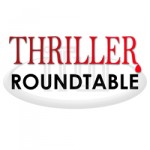 This week we’re joined by ITW Members Laura Elvebak, Mauro Azzano, Laura McNeill, Tim Tigner, R. G. Belsky, Bernard Maestas, A. D. Garrett, Jason M. Hough and Diane Kelly, as they discuss setting. “Is setting or location an important element of your stories? Why?”
This week we’re joined by ITW Members Laura Elvebak, Mauro Azzano, Laura McNeill, Tim Tigner, R. G. Belsky, Bernard Maestas, A. D. Garrett, Jason M. Hough and Diane Kelly, as they discuss setting. “Is setting or location an important element of your stories? Why?”
~~~~~
 Bernard Maestas lives in paradise. A police officer patrolling the mean streets of Hawaii, he has a background in contract security and military and civilian law enforcement. When not saving the world, one speeding ticket at a time, and not distracted by video games and the internet, he is usually hard at work on his next book.
Bernard Maestas lives in paradise. A police officer patrolling the mean streets of Hawaii, he has a background in contract security and military and civilian law enforcement. When not saving the world, one speeding ticket at a time, and not distracted by video games and the internet, he is usually hard at work on his next book.
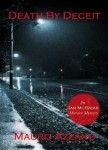 Mauro Azzano was born in Italy, north of Venice. He grew up in Italy, Australia and finally Canada, settling on the west coast outside Vancouver, Canada. He has a broad experience to call on as a writer, having worked as a college instructor, commercial pilot and a number of other unusual occupations. Currently, he is working on the Ian McBriar Murder Mystery series and training as a distance runner.
Mauro Azzano was born in Italy, north of Venice. He grew up in Italy, Australia and finally Canada, settling on the west coast outside Vancouver, Canada. He has a broad experience to call on as a writer, having worked as a college instructor, commercial pilot and a number of other unusual occupations. Currently, he is working on the Ian McBriar Murder Mystery series and training as a distance runner.
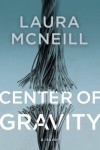 After six years behind the anchor desk at two CBS affiliates, Laura McNeill moved to the Alabama Gulf Coast to raise her family. Her accolades in broadcasting include awards from the Associated Press, including Best News Anchor and Best Specialized Reporter. Laura was recently awarded a 2-book deal with Thomas Nelson Publishing, a division of HarperCollins. Her novel, Center of Gravity, set in Mobile, Ala., will be published in July of 2015. Her writing awards include those from William Faulkner-Wisdom Creative Writing Competition, Writer’s Digest, RWA, and the Eric Hoffer competition.
After six years behind the anchor desk at two CBS affiliates, Laura McNeill moved to the Alabama Gulf Coast to raise her family. Her accolades in broadcasting include awards from the Associated Press, including Best News Anchor and Best Specialized Reporter. Laura was recently awarded a 2-book deal with Thomas Nelson Publishing, a division of HarperCollins. Her novel, Center of Gravity, set in Mobile, Ala., will be published in July of 2015. Her writing awards include those from William Faulkner-Wisdom Creative Writing Competition, Writer’s Digest, RWA, and the Eric Hoffer competition.
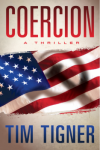 Tim Tigner writes fast-paced espionage thrillers with the tagline: Devious Devices, International Intrigue, and the Deadly Mistake of Messing with the Wrong Guy. A Soviet Counterintelligence Specialist and Veteran of the Green Berets, Tim worked out of Moscow throughout perestroika, Brussels during the formation of the EU, and more recently Silicon Valley as a startup CEO. Please visit his website to download one of Tim’s thrillers for free.
Tim Tigner writes fast-paced espionage thrillers with the tagline: Devious Devices, International Intrigue, and the Deadly Mistake of Messing with the Wrong Guy. A Soviet Counterintelligence Specialist and Veteran of the Green Berets, Tim worked out of Moscow throughout perestroika, Brussels during the formation of the EU, and more recently Silicon Valley as a startup CEO. Please visit his website to download one of Tim’s thrillers for free.
 R. G. Belsky is an author of crime fiction and a journalist in New York City. His suspense thriller, THE KENNEDY CONNECTION, was published by Atria in August 2014. It is the first in a series of books from Atria featuring Gil Malloy, a New York Daily News reporter. Belsky himself is a former managing editor of the Daily News; metropolitan editor of the New York Post; news editor at Star magazine and – most recently – managing editor at NBCNews.com.
R. G. Belsky is an author of crime fiction and a journalist in New York City. His suspense thriller, THE KENNEDY CONNECTION, was published by Atria in August 2014. It is the first in a series of books from Atria featuring Gil Malloy, a New York Daily News reporter. Belsky himself is a former managing editor of the Daily News; metropolitan editor of the New York Post; news editor at Star magazine and – most recently – managing editor at NBCNews.com.
 A.D. Garrett is the pseudonym for the writing collaboration between author, Margaret Murphy, and forensic advisor, Professor Dave Barclay. Under her own name, Margaret’s novels have received starred reviews from Publishers’ Weekly and Booklist in the USA. She has been shortlisted for the First Blood critics’ award for crime fiction, and the Crime Writers’ Association (CWA) Dagger in the Library, and she is a CWA Short Story Dagger winner. She is an RLF Writing Fellow, is founder of Murder Squad, a touring group of crime writers, and past Chair of the CWA.
A.D. Garrett is the pseudonym for the writing collaboration between author, Margaret Murphy, and forensic advisor, Professor Dave Barclay. Under her own name, Margaret’s novels have received starred reviews from Publishers’ Weekly and Booklist in the USA. She has been shortlisted for the First Blood critics’ award for crime fiction, and the Crime Writers’ Association (CWA) Dagger in the Library, and she is a CWA Short Story Dagger winner. She is an RLF Writing Fellow, is founder of Murder Squad, a touring group of crime writers, and past Chair of the CWA.
 Diane Kelly is the author of funny, romantic mysteries, including the Paw Enforcement K-9 series and the Death and Taxes white-collar crime series. She is a former state assistant attorney general and tax advisor who spent much of her career fighting, or inadvertently working for, white-collar criminals. She is also a proud graduate of the Mansfield, Texas Citizens Police Academy. Diane has combined her fascination with law enforcement and her love of animals in her K-9 cop Paw Enforcement series.
Diane Kelly is the author of funny, romantic mysteries, including the Paw Enforcement K-9 series and the Death and Taxes white-collar crime series. She is a former state assistant attorney general and tax advisor who spent much of her career fighting, or inadvertently working for, white-collar criminals. She is also a proud graduate of the Mansfield, Texas Citizens Police Academy. Diane has combined her fascination with law enforcement and her love of animals in her K-9 cop Paw Enforcement series.
 Jason M. Hough (pronounced ‘Huff’) is the New York Times bestselling author of The Darwin Elevator, The Exodus Towers, and The Plague Forge. His next novel, Zero World, is coming in September 2015. In a former life he was a 3-D artist, animator, and game designer. Jason lives near Seattle, Washington with his wife and two young sons.
Jason M. Hough (pronounced ‘Huff’) is the New York Times bestselling author of The Darwin Elevator, The Exodus Towers, and The Plague Forge. His next novel, Zero World, is coming in September 2015. In a former life he was a 3-D artist, animator, and game designer. Jason lives near Seattle, Washington with his wife and two young sons.
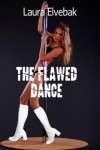 Laura Elvebak studied writing at UCLA, USC, Rice, and Beyond Baroque. She has penned several magazine articles, co-wrote, directed and acted in a one-act play, optioned three screenplays, and co-wrote a script for the 48 Hour Film Project. She is the author of the Niki Alexander mysteries, Less Dead and Lost Witness. A standalone, The Flawed Dance, is due from Black Opal Books on July 18, followed by the third Niki Alexander mystery, A Matter of Revenge. She is the treasurer and newsletter editor of the Southwest Chapter of MWA, a member of Sisters-In-Crime, The International Thriller Writers, and The Final Twist Writers.
Laura Elvebak studied writing at UCLA, USC, Rice, and Beyond Baroque. She has penned several magazine articles, co-wrote, directed and acted in a one-act play, optioned three screenplays, and co-wrote a script for the 48 Hour Film Project. She is the author of the Niki Alexander mysteries, Less Dead and Lost Witness. A standalone, The Flawed Dance, is due from Black Opal Books on July 18, followed by the third Niki Alexander mystery, A Matter of Revenge. She is the treasurer and newsletter editor of the Southwest Chapter of MWA, a member of Sisters-In-Crime, The International Thriller Writers, and The Final Twist Writers.
- LAST GIRL MISSING with K.L. Murphy - July 25, 2024
- CHILD OF DUST with Yigal Zur - July 25, 2024
- THE RAVENWOOD CONSPIRACY with Michael Siverling - July 19, 2024
